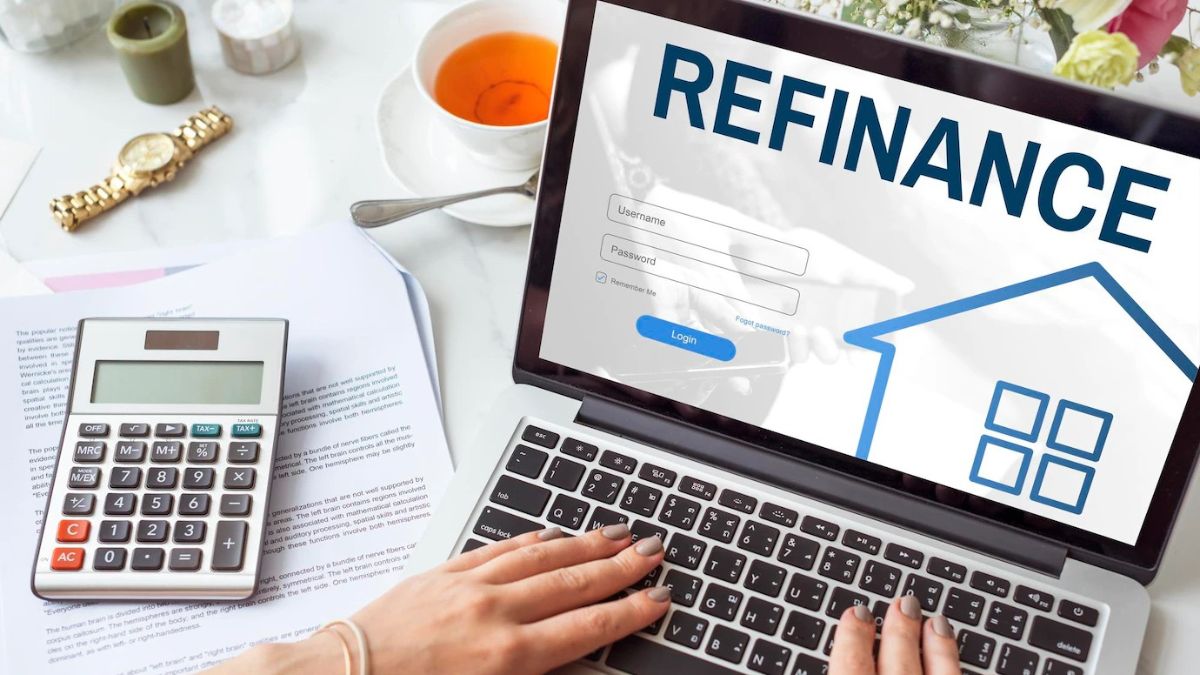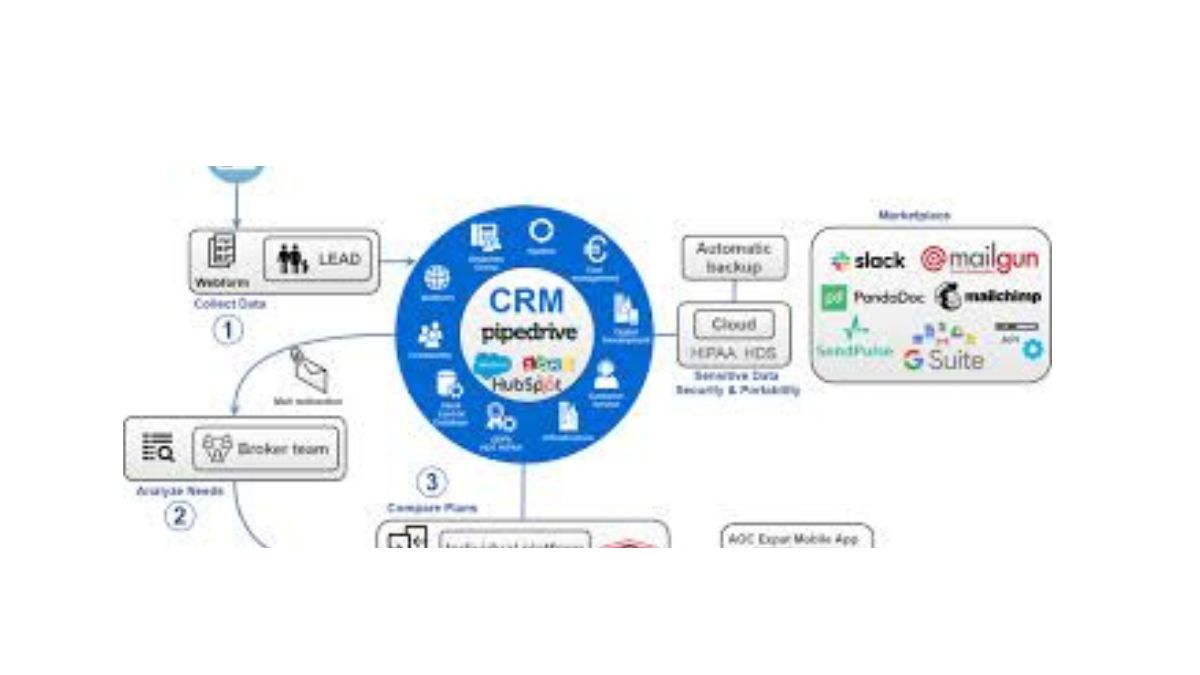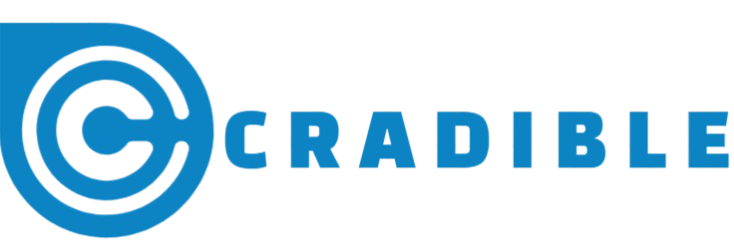HOME
Everything You Need to Know About Refinancing Your Home

Thinking about refinancing your home? Whether you’re looking to lower your monthly payments, tap into your home’s equity, or secure a better interest rate, refinancing can be a smart financial move. In this guide, we’ll walk you through everything you need to know about refinancing so you can make an informed decision that suits your needs. Let’s dive in!
What is Refinancing?
Refinancing is essentially replacing your current mortgage with a new one. This new loan pays off the existing debt, creating different repayment terms. It can be a strategic financial decision for homeowners to achieve various goals.
One common reason people refinance is to secure a lower interest rate. By doing so, they can potentially save money over the life of the loan or reduce their monthly payments.
Another benefit of refinancing is accessing your home’s equity through a cash-out refinance. This allows you to borrow against the value of your property for expenses like home renovations, debt consolidation, or other big purchases.
Refinancing offers flexibility and opportunities for homeowners to improve their financial situation by adjusting their mortgage terms to better suit their needs.
Reasons to Consider Refinancing
Are you looking to lower your monthly mortgage payments? Refinancing could be the solution you’ve been searching for. By refinancing your home, you may qualify for a lower interest rate than when you first obtained your mortgage, leading to significant savings over time.
Another reason to consider refinancing is to shorten the term of your loan. If you’re in a better financial position now and want to pay off your home sooner, refinancing into a shorter-term loan can help achieve that goal.
Additionally, if you have built up equity in your home or improved your credit score since getting your original mortgage, refinancing can allow you to access that equity or secure better terms based on your improved financial standing.
Refinancing also presents an opportunity to switch from an adjustable-rate mortgage (ARM) to a fixed-rate mortgage if stability and predictability in monthly payments are important factors for you.
Types of Refinancing Options
When it comes to refinancing your home, there are several options available to suit different financial goals and situations. One common type is a rate-and-term refinance, where the goal is to secure a lower interest rate or change the loan term. This can help reduce monthly payments and save money over the life of the loan.
Cash-out refinancing is another option that allows homeowners to borrow against their home’s equity. This can be useful for funding major expenses like home renovations or consolidating high-interest debt. However, it’s essential to consider the long-term implications of tapping into your home’s equity.
For those with an FHA or VA loan, streamline refinancing may be an attractive option. This process requires minimal paperwork and underwriting, making it a quicker and easier way to refinance at a lower rate.
Understanding the different types of refinancing options available can help you make an informed decision based on your specific needs and circumstances.
The Process of Refinancing
When you decide to refinance your home, the process can seem overwhelming at first. The first step is to gather all necessary documents like income statements, credit reports, and property information. This will help lenders assess your eligibility for refinancing.
Next, shop around and compare offers from different lenders to find the best rates and terms that suit your financial goals. Once you choose a lender, they will guide you through the application process which may include a home appraisal and underwriting review.
After approval, closing will take place where you’ll sign paperwork to finalize the new loan terms. It’s important to review all documents carefully before signing to ensure accuracy and understanding of the terms.
Understanding each step of the refinancing process can help make it smoother and more manageable for homeowners looking to improve their financial situation.
Common Mistakes to Avoid when Refinancing
When it comes to refinancing your home, there are some common mistakes that you’ll want to steer clear of in order to make the process as smooth as possible. One big mistake is not shopping around for the best rates and terms – don’t settle for the first offer you receive. Another pitfall to avoid is neglecting to consider all the associated fees and costs involved in refinancing. Being unaware of these expenses can lead to unexpected financial burdens down the line.
Additionally, rushing through the paperwork without fully understanding the terms and conditions can be a critical error. Take your time to read and comprehend all aspects of the new loan agreement before signing on the dotted line. It’s also important not to overlook your credit score – ensuring it’s in good shape before applying for a refinance can help you secure better rates.
Failing to assess your long-term financial goals when refinancing may result in choosing a loan that doesn’t align with your objectives. Be sure to have a clear plan in mind so that you’re making informed decisions throughout the process.
How to Determine if Refinancing is Right for You
When considering whether refinancing is the right move for you, start by assessing your current mortgage terms. Look at your interest rate, monthly payments, and remaining loan balance. Compare these with the current market rates to see if there’s a significant difference that could save you money.
Next, think about your financial goals. Are you looking to lower your monthly payments, pay off your mortgage faster, or tap into home equity for other expenses? Understanding what you hope to achieve through refinancing can help guide your decision-making process.
Consider how long you plan to stay in your home. If you’re thinking of moving in the near future, the cost of refinancing might outweigh the potential savings. However, if you intend to stay put for several more years, refinancing could make sense.
Factor in any prepayment penalties or closing costs associated with refinancing. These fees can impact the overall benefit of a new loan. Make sure to calculate whether the savings from refinancing will offset these additional expenses.
Consult with a financial advisor or mortgage specialist to get personalized advice tailored to your specific situation and goals. They can provide valuable insights and help determine if refinancing aligns with your long-term financial plans.
Conclusion
Refinancing your home can be a strategic financial move if done wisely. By understanding what refinancing entails, considering the reasons for it, knowing the different types of options available, being familiar with the process, avoiding common mistakes, and determining if it’s the right choice for you based on your current situation and goals – you can make an informed decision that benefits you in the long run. Remember to consult with a financial advisor or mortgage specialist to help guide you through the refinancing process and ensure that it aligns with your overall financial plan. Make sure to weigh all factors carefully before deciding whether or not to refinance your home.
HOME
Unveiling the Genius: The Life and Legacy of Albert Ezerzer

Albert Ezerzer is a name that resonates with brilliance and innovation. His contributions to science and technology have transformed our understanding of the world around us. Yet, many people remain unaware of the life behind this genius. From his humble beginnings to groundbreaking discoveries, Ezerzer’s journey is nothing short of inspiring.
Curiosity sparked his interest at an early age, leading him down a path filled with remarkable achievements and significant challenges. But who exactly was Albert Ezerzer? What drove him? And how did he shape society as we know it today? Join us as we delve into the extraordinary life and legacy of this enigmatic figure. Discover the milestones that defined his career and explore how his work continues to influence generations long after his time.
Early Life and Education
Albert Ezerzer was born into a modest family, where curiosity thrived. His childhood home buzzed with lively discussions about science and philosophy. From an early age, Albert displayed an insatiable thirst for knowledge.
Schooling in his hometown opened doors to endless possibilities. He excelled in mathematics and the sciences, surprising teachers with his extraordinary analytical skills. Local mentors recognized his potential and encouraged him to explore further.
As he transitioned to high school, Albert’s passion intensified. He immersed himself in advanced courses while also dabbling in literature and art. This diverse education shaped his multifaceted thinking.
Eager to expand his horizons, he pursued higher education at a prestigious university. There, he delved deep into complex theories that would later influence groundbreaking work throughout his career. Albert’s formative years laid the groundwork for the genius that was yet to emerge.
Discovering His Genius: Milestones in His Career
Albert Ezerzer’s career is marked by a series of groundbreaking milestones. Early on, he displayed an insatiable curiosity that set him apart from his peers.
His first major breakthrough arrived during his time at university, where he published research that challenged prevailing theories in his field. This work gained significant attention and laid the groundwork for future explorations.
As Ezerzer ventured into professional life, he continued to innovate. His projects often bridged gaps between disciplines, fostering collaboration among scientists and thinkers from diverse backgrounds.
One pivotal moment came when he received prestigious awards recognizing his contributions to science and technology. These accolades not only validated his efforts but also inspired others to pursue unconventional paths.
Throughout the years, Ezerzer’s name became synonymous with creativity and intellect. Each achievement propelled him further into the spotlight as a true visionary of his time.
The Impact of Albert Ezerzer’s Work on Society
Albert Ezerzer’s work transcended traditional boundaries, reshaping various spheres of society. His innovative approaches revolutionized fields such as technology and education.
Through his groundbreaking theories, he inspired a generation of thinkers to challenge the status quo. This ripple effect sparked advancements that improved countless lives.
In addition to technical achievements, Ezerzer emphasized social responsibility. He championed initiatives aimed at bridging gaps in access to knowledge and resources. His dedication influenced policies that prioritize inclusivity.
Ezerzer’s legacy is embedded in modern practices across industries. Many professionals today cite him as a pivotal influence in their own journeys.
His ability to marry intellect with empathy created frameworks for sustainable growth. Society continues to benefit from his vision long after his passing, reminding us of the power one individual can wield through passion and ingenuity.
Controversies and Criticisms
Albert Ezerzer’s journey was not without its share of controversies. His groundbreaking theories often sparked heated debates among contemporaries and critics alike. Some argued that his methods lacked rigor, questioning the validity of his findings.
Additionally, Ezerzer faced backlash for his unconventional views on collaboration within scientific communities. Many believed he prioritized individualism over teamwork, creating friction in professional relationships.
His personal life also drew scrutiny. Rumors swirled about conflicts with colleagues and ethical dilemmas surrounding certain experiments. These allegations cast a shadow over some of his achievements.
Despite the criticisms, Albert remained steadfast in his beliefs. He continued to push boundaries and challenge norms, leaving an indelible mark on both science and society at large. The complexities of his character only add layers to understanding this enigmatic figure.
Personal Life and Legacy
Albert Ezerzer was known for his brilliance in the professional realm, but his personal life revealed a man of many layers. He valued simplicity and often sought solace in nature. Long walks through serene landscapes fueled his creativity.
Family played an essential role in Albert’s life. He fostered close relationships with loved ones, sharing ideas and inspirations that shaped his work. His home became a haven for discussions on philosophy and innovation.
After his passing, Ezerzer’s contributions continued to resonate. Institutions dedicated to science and education honored him by establishing scholarships and research initiatives in his name.
His legacy lives on through countless individuals inspired by his discoveries. Today, students and researchers draw motivation from both his achievements and human values, ensuring that Albert Ezerzer’s impact remains vibrant across generations.
Conclusion
Albert Ezerzer stands as a towering figure in the realms of science and innovation. His incredible journey from humble beginnings to becoming a transformative thinker is nothing short of inspiring. Through his groundbreaking work, he reshaped how we understand complex systems and processes.
Despite facing controversies that challenged his reputation, Ezerzer’s contributions have left an indelible mark on society. His legacy continues to influence new generations of thinkers and innovators who draw inspiration from his methodologies and insights.
The impact of Albert Ezerzer’s work transcends disciplines, prompting discussions about ethics in science, the importance of curiosity, and the relentless pursuit of knowledge. His life story serves not only as a reminder of human potential but also as an invitation for us all to explore our own genius within.
As we remember Albert Ezerzer today, it’s clear that his intellectual spirit will continue to guide aspiring minds toward uncharted territories for years to come.
HOME
Enhance Your Doll Collection with Dolls Division Mod Apk Features

Are you a doll collector looking to take your collection to the next level? Look no further! Introducing Dolls Division Mod Apk – the ultimate solution to enhance your doll collecting experience like never before. Get ready to unlock exclusive features, customization options, and a whole new world of possibilities for your beloved dolls. Join us as we explore the exciting benefits and impact of using Dolls Division Mod Apk in this must-read blog post!
Benefits of Using Dolls Division Mod Apk
Dolls Division Mod Apk offers a range of benefits that can enhance your doll collection experience. One of the key advantages is access to exclusive features that are not available in the standard version. With this mod apk, you can unlock new dolls, outfits, accessories, and customization options to make your collection truly unique.
Additionally, the mod apk allows for greater flexibility in customizing your dolls according to your preferences. You can mix and match different styles, colors, and patterns to create one-of-a-kind looks for each doll in your collection. This level of personalization adds a fun and creative element to collecting dolls.
Moreover, using Dolls Division Mod Apk provides a seamless user experience with enhanced performance and smooth gameplay. The optimized features ensure that you can enjoy playing with your dolls without any interruptions or lags. Incorporating this mod apk into your doll collecting routine can elevate your hobby to new heights of enjoyment and creativity.
Access to Exclusive Features and Customization Options
Are you looking to take your doll collection to the next level? With Dolls Division Mod Apk, you’ll have access to exclusive features and customization options that will elevate your collecting experience.
Imagine being able to personalize every aspect of your dolls, from their outfits to their accessories. With this mod apk, the possibilities are endless. You can mix and match different styles, create unique looks, and truly make each doll one-of-a-kind.
The ability to customize your dolls not only adds a fun element to collecting but also allows you to express your creativity. Whether you prefer classic styles or modern trends, the customization options in Dolls Division Mod Apk cater to all tastes.
From hairstyles and eye colors to clothing and accessories, you have full control over how your dolls look. This level of personalization sets this mod apk apart from traditional doll collecting methods.
With Dolls Division Mod Apk, you’re not just collecting dolls – you’re creating a curated collection that reflects your individual style and preferences. Elevate your hobby with exclusive features and limitless customization options at your fingertips!
How to Download and Install the Mod Apk on Your Device
To begin enhancing your doll collection with Dolls Division Mod Apk, the first step is to download and install the mod on your device. The process is simple and straightforward, allowing you to access exclusive features and customization options for your dolls.
Start by searching for a trusted source to download the Dolls Division Mod Apk file. Make sure to choose a reliable website or platform to avoid any potential risks or malware.
Once you have downloaded the mod apk file, navigate to your device’s settings and enable installation from unknown sources. This will allow you to install apps from sources other than the Google Play Store.
Locate the downloaded Dolls Division Mod Apk file on your device and click on it to initiate the installation process. Follow the on-screen instructions to complete the installation successfully.
After installing the mod, launch the Dolls Division app and start exploring all the exciting new features it has to offer. Get ready to take your doll collecting experience to a whole new level with this enhanced version!
Step-by-Step Guide to Using Dolls Division Mod Apk
Are you ready to elevate your doll collection experience with the Dolls Division Mod Apk? Let’s dive into a step-by-step guide on how to make the most of this exciting tool.
Ensure that you have downloaded the Dolls Division Mod Apk from a trusted source. Once the download is complete, proceed to install the application on your device following the simple installation instructions provided.
Next, open the Dolls Division Mod Apk and explore its user-friendly interface. You will be greeted with a range of exclusive features and customization options that will enhance your doll collecting journey.
Take some time to familiarize yourself with all the functionalities available within the app. From customizing doll outfits to creating unique backgrounds for your dolls, there are endless possibilities to unleash your creativity.
Don’t forget to save your creations within the app or share them with other collectors in the community. The Dolls Division Mod Apk is not just a tool but a platform for connecting with fellow enthusiasts and sharing inspiration.
Embrace this innovative technology and watch as it transforms your doll collection into something truly spectacular. Happy collecting!
The Impact of Dolls Division Mod Apk on the Doll Collecting Community
The Dolls Division Mod Apk has revolutionized the doll collecting community by offering a new level of customization and features that were previously unavailable. This innovative app allows collectors to personalize their dolls in unique ways, from changing outfits to customizing accessories.
With the Mod Apk, collectors can now create one-of-a-kind dolls that truly reflect their individual style and personality. This has sparked creativity within the community, leading to an increase in sharing ideas and inspiration.
Furthermore, the exclusive features available through the Mod Apk have brought collectors together on a digital platform where they can connect, collaborate, and showcase their collections like never before. The impact of this technology on the doll collecting community is undeniable – it has fostered a sense of camaraderie among enthusiasts and opened up endless possibilities for creative expression through doll customization.
Final Thoughts and Recommendations for Doll Collectors
Utilizing the Dolls Division Mod Apk can truly enhance your doll collection experience. With access to exclusive features, customization options, and a vibrant community of fellow collectors, this modded version offers a unique way to engage with your hobby. By following the step-by-step guide for downloading, installing, and using the Mod Apk on your device, you can elevate your doll collecting journey to new heights.
For all doll enthusiasts out there looking to take their collection to the next level, exploring the world of Dolls Division Mod Apks is highly recommended. Embrace the opportunities it presents for creativity, personalization, and connectivity within the doll collecting community. Unleash your imagination and make each doll in your collection truly one-of-a-kind with this innovative tool at your fingertips.
So why wait? Dive into the world of dolls with Dolls Division Mod Apk today and unlock endless possibilities for expanding and enriching your beloved collection! Happy collecting!
HOME
How Refinancing Can Help You Achieve Your Financial Goals

Ready to take control of your financial future? If you’ve been looking for a way to reach your money goals faster, refinancing could be the game-changer you need. Let’s dive into how this powerful financial tool can help you achieve your dreams!
Understanding the Basics: What is Refinancing?
Refinancing is a financial strategy that involves replacing an existing loan with a new one, typically with better terms. It’s like hitting the reset button on your mortgage or other loans to potentially save money and improve your financial situation.
When you refinance, you take out a new loan to pay off the original one. This could result in lower interest rates, reduced monthly payments, or even shorten the term of your loan. Basically, refinancing allows you to restructure your debt in a way that works better for you.
It’s important to consider factors like current interest rates, fees associated with refinancing, and how long you plan to stay in your home when deciding if refinancing is right for you. By understanding the basics of refinancing, you can make informed decisions about managing your finances effectively.
Benefits of Refinancing
Refinancing offers numerous benefits that can help you achieve your financial goals. One of the significant advantages is the potential to secure a lower interest rate on your loan. By refinancing at a lower rate, you could save money on interest payments over time.
Another benefit of refinancing is the opportunity to shorten the term of your loan. If you switch to a shorter-term mortgage, you may pay off your debt faster and build equity in your home more quickly.
Additionally, refinancing can provide access to cash through what’s known as a cash-out refinance. This option allows you to tap into your home’s equity for things like home improvements, debt consolidation, or other financial needs.
Furthermore, consolidating high-interest debts into a single, lower-rate loan through refinancing can potentially save you money and simplify your monthly payments.
When to Consider Refinancing
Considering refinancing can be a strategic move to improve your financial situation. One key factor to examine is the current interest rates – if they have dropped significantly since you first took out your loan, refinancing could potentially save you money in the long run. Another reason to consider refinancing is if your credit score has improved since you initially borrowed funds. A higher credit score may qualify you for better interest rates and terms, making it an opportune time to refinance.
Additionally, if you’re looking to consolidate debt or make home improvements, tapping into the equity in your home through a refinance could provide the necessary funds at a lower interest rate compared to other types of loans. It’s also worth exploring refinancing options when facing major life changes such as marriage, divorce, or retirement as these events can impact your financial goals and priorities.
Always weigh the costs associated with refinancing against potential savings or benefits before making a decision.
Different Types of Refinancing Options
When it comes to refinancing, there are various options available to suit different financial needs and goals. One common type is rate-and-term refinancing, which involves obtaining a new loan with better terms than the existing one. This can help lower your interest rate or change the length of your repayment period.
Cash-out refinancing allows you to borrow more than what you owe on your current mortgage and receive the difference in cash. It’s a popular choice for homeowners looking to access their home equity for major expenses like home improvements or debt consolidation.
Another option is streamline refinancing, typically offered by government-backed loans such as FHA or VA mortgages. This option simplifies the refinance process by requiring less paperwork and underwriting, making it quicker and easier for eligible borrowers.
Understanding the different types of refinancing options can help you make an informed decision based on your specific financial situation and goals.
How to Prepare for Refinancing
Before diving into the refinancing process, it’s crucial to prepare yourself for what lies ahead. Start by reviewing your current financial situation – take a close look at your credit score, outstanding debts, and monthly expenses.
Next, gather all the necessary documents such as pay stubs, tax returns, and bank statements. Having these on hand will expedite the application process and help you provide accurate information to potential lenders.
Consider researching different lenders and comparing their offers to find the best refinancing deal for your specific needs. Don’t hesitate to ask questions and clarify any doubts before committing to a lender.
It’s also wise to assess your long-term financial goals and how refinancing can help you achieve them. Whether it’s lowering your monthly payments, reducing interest rates, or shortening the loan term – having clear objectives will guide you in making informed decisions throughout the refinancing journey.
By taking these proactive steps beforehand, you’ll be better equipped to navigate the refinancing process smoothly and work towards securing a more favorable financial future.
Conclusion:
By considering refinancing as a strategic financial tool, you can pave the way towards achieving your long-term financial goals. Whether it’s lowering your monthly payments, reducing interest rates, or consolidating debt, refinancing offers various benefits that can help you improve your overall financial health. Remember to assess your current situation, explore different refinancing options, and be prepared for the process to make the most out of this opportunity. With careful planning and consideration, refinancing can be a powerful tool in reaching your financial aspirations and securing a stable future. Start exploring your refinancing options today to take control of your finances and work towards accomplishing your goals.
-

 FOOD10 months ago
FOOD10 months agoSure! Here are seven engaging blog post titles related to the concept of a “retail food product
-

 GENERAL9 months ago
GENERAL9 months agoTroubleshooting Common VRChat Login Issues: Tips and Tricks
-

 INSURANCE9 months ago
INSURANCE9 months agoNavigating the Future of Insurance with Technical Reserves in Flow Insurance
-

 TECH9 months ago
TECH9 months agoDiscover Reliable Abithelp Contact Solutions with JustAnswer
-

 FOOD10 months ago
FOOD10 months agoSure! Here are seven engaging blog post titles related to a “502 food blog
-

 GENERAL11 months ago
GENERAL11 months agoExploring the World of Erothots: What You Need to Know
-

 HEALTH10 months ago
HEALTH10 months agoMaine Health Jobs: A Comprehensive Guide
-

 TECH5 months ago
TECH5 months agoWhat You Need to Know About the 346 Area Code
